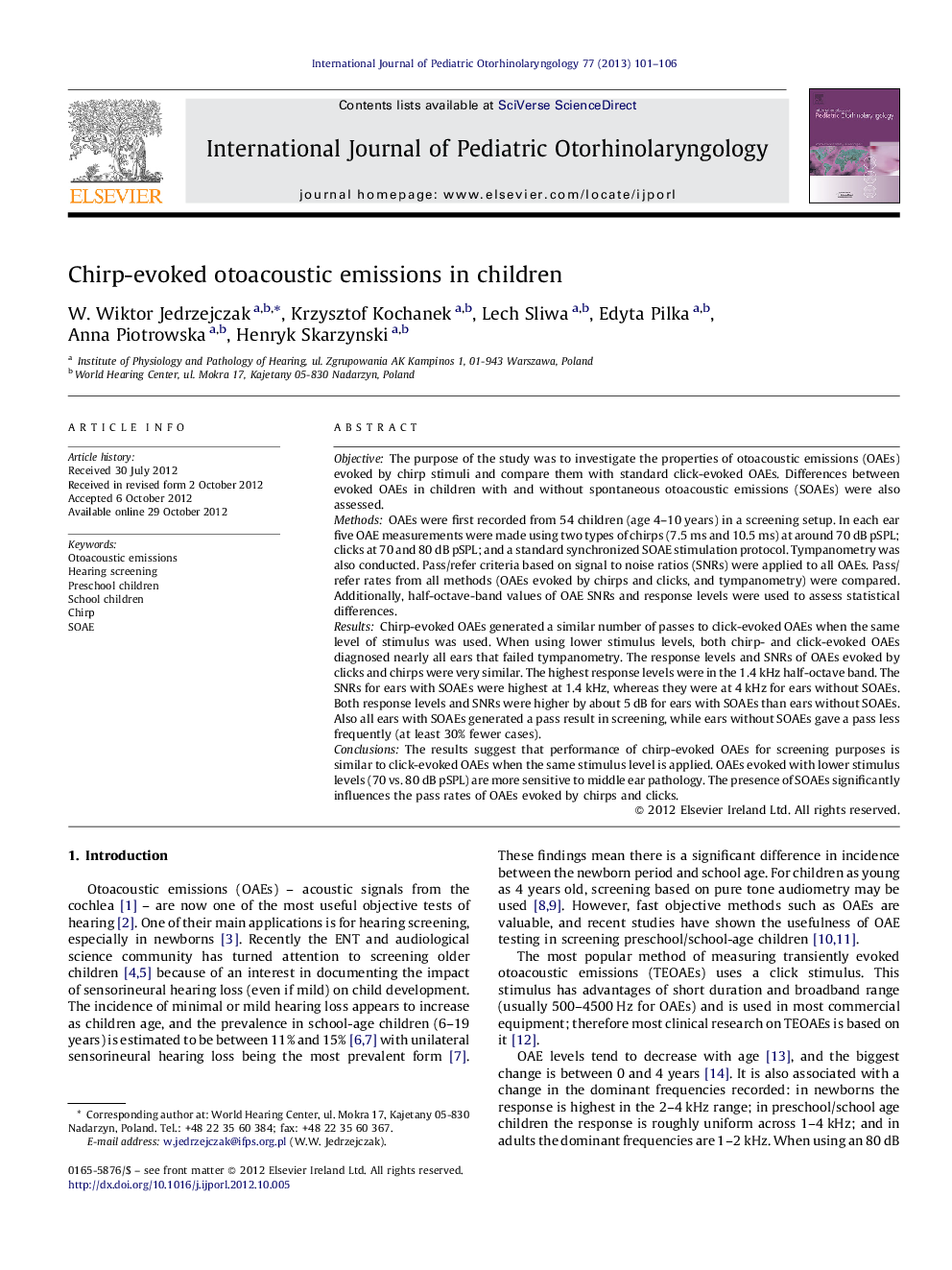| کد مقاله | کد نشریه | سال انتشار | مقاله انگلیسی | نسخه تمام متن |
|---|---|---|---|---|
| 6214010 | 1606024 | 2013 | 6 صفحه PDF | دانلود رایگان |

ObjectiveThe purpose of the study was to investigate the properties of otoacoustic emissions (OAEs) evoked by chirp stimuli and compare them with standard click-evoked OAEs. Differences between evoked OAEs in children with and without spontaneous otoacoustic emissions (SOAEs) were also assessed.MethodsOAEs were first recorded from 54 children (age 4-10 years) in a screening setup. In each ear five OAE measurements were made using two types of chirps (7.5Â ms and 10.5Â ms) at around 70Â dB pSPL; clicks at 70 and 80Â dB pSPL; and a standard synchronized SOAE stimulation protocol. Tympanometry was also conducted. Pass/refer criteria based on signal to noise ratios (SNRs) were applied to all OAEs. Pass/refer rates from all methods (OAEs evoked by chirps and clicks, and tympanometry) were compared. Additionally, half-octave-band values of OAE SNRs and response levels were used to assess statistical differences.ResultsChirp-evoked OAEs generated a similar number of passes to click-evoked OAEs when the same level of stimulus was used. When using lower stimulus levels, both chirp- and click-evoked OAEs diagnosed nearly all ears that failed tympanometry. The response levels and SNRs of OAEs evoked by clicks and chirps were very similar. The highest response levels were in the 1.4Â kHz half-octave band. The SNRs for ears with SOAEs were highest at 1.4Â kHz, whereas they were at 4Â kHz for ears without SOAEs. Both response levels and SNRs were higher by about 5Â dB for ears with SOAEs than ears without SOAEs. Also all ears with SOAEs generated a pass result in screening, while ears without SOAEs gave a pass less frequently (at least 30% fewer cases).ConclusionsThe results suggest that performance of chirp-evoked OAEs for screening purposes is similar to click-evoked OAEs when the same stimulus level is applied. OAEs evoked with lower stimulus levels (70 vs. 80Â dB pSPL) are more sensitive to middle ear pathology. The presence of SOAEs significantly influences the pass rates of OAEs evoked by chirps and clicks.
Journal: International Journal of Pediatric Otorhinolaryngology - Volume 77, Issue 1, January 2013, Pages 101-106